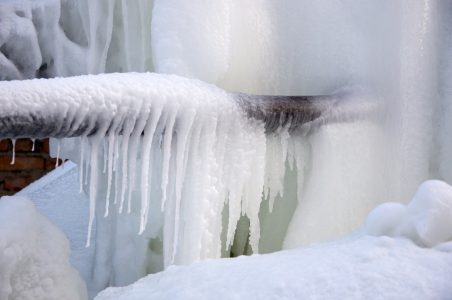Tips to Keep Your Pipes from Cold Weather Issues: Crucial Advice
Tips to Keep Your Pipes from Cold Weather Issues: Crucial Advice
Blog Article
They are making a few good observations related to How To Avoid Freezing Pipes overall in the article below.

Cold weather can ruin your plumbing, particularly by freezing pipelines. Below's exactly how to avoid it from happening and what to do if it does.
Introduction
As temperatures decline, the threat of icy pipes boosts, possibly resulting in pricey repair work and water damages. Comprehending how to stop frozen pipes is vital for home owners in cold climates.
Understanding Icy Pipes
What creates pipes to ice up?
Pipelines ice up when subjected to temperature levels below 32 ° F (0 ° C) for prolonged periods. As water inside the pipes freezes, it increases, taxing the pipe wall surfaces and possibly causing them to break.
Dangers and damages
Frozen pipelines can cause supply of water disruptions, home damage, and pricey fixings. Ruptured pipes can flood homes and create extensive structural damage.
Indications of Frozen Piping
Recognizing icy pipes early can avoid them from breaking.
How to identify frozen pipes
Seek lowered water circulation from faucets, unusual smells or sounds from pipelines, and noticeable frost on revealed pipelines.
Prevention Tips
Protecting prone pipelines
Cover pipelines in insulation sleeves or make use of warmth tape to shield them from freezing temperature levels. Concentrate on pipes in unheated or exterior areas of the home.
Home heating strategies
Keep interior rooms properly heated, especially locations with pipes. Open cabinet doors to permit cozy air to distribute around pipes under sinks.
Protecting Exterior Plumbing
Yard hoses and outside taps
Disconnect and drain pipes garden tubes prior to winter months. Install frost-proof faucets or cover outdoor taps with insulated caps.
What to Do If Your Pipelines Freeze
Immediate actions to take
If you think frozen pipes, maintain taps open up to relieve pressure as the ice thaws. Make use of a hairdryer or towels taken in warm water to thaw pipelines slowly.
Long-Term Solutions
Architectural adjustments
Think about rerouting pipelines far from outside walls or unheated locations. Add additional insulation to attic rooms, cellars, and crawl spaces.
Updating insulation
Purchase top quality insulation for pipes, attics, and walls. Proper insulation helps maintain consistent temperatures and minimizes the threat of icy pipes.
Final thought
Protecting against icy pipes needs positive actions and quick actions. By comprehending the causes, signs, and safety nets, home owners can shield their pipes during winter.
5 Ways to Prevent Frozen Pipes
Drain Outdoor Faucets and Disconnect Hoses
First, close the shut-off valve that controls the flow of water in the pipe to your outdoor faucet. Then, head outside to disconnect and drain your hose and open the outdoor faucet to allow the water to completely drain out of the line. Turn off the faucet when done. Finally, head back to the shut-off valve and drain the remaining water inside the pipe into a bucket or container. Additionally, if you have a home irrigation system, you should consider hiring an expert to clear the system of water each year.
Insulate Pipes
One of the best and most cost-effective methods for preventing frozen water pipes is to wrap your pipes with insulation. This is especially important for areas in your home that aren’t exposed to heat, such as an attic. We suggest using foam sleeves, which can typically be found at your local hardware store.
Keep Heat Running at 65
Your pipes are located inside your walls, and the temperature there is much colder than the rest of the house. To prevent your pipes from freezing, The Insurance Information Institute suggests that you keep your home heated to at least 65 degrees, even when traveling. You may want to invest in smart devices that can keep an eye on the temperature in your home while you’re away.
Leave Water Dripping
Moving water — even a small trickle — can prevent ice from forming inside your pipes. When freezing temps are imminent, start a drip of water from all faucets that serve exposed pipes. Leaving a few faucets running will also help relieve pressure inside the pipes and help prevent a rupture if the water inside freezes.
Open Cupboard Doors
Warm your kitchen and bathroom pipes by opening cupboards and vanities. You should also leave your interior doors ajar to help warm air circulate evenly throughout your home.

We hope you liked our topic about Prevent Frozen Pipes . Thanks a ton for spending some time to read through our piece of content. Sharing is caring. You just don't know, you may be helping someone out. Many thanks for taking the time to read it.
Call Us Today Report this page